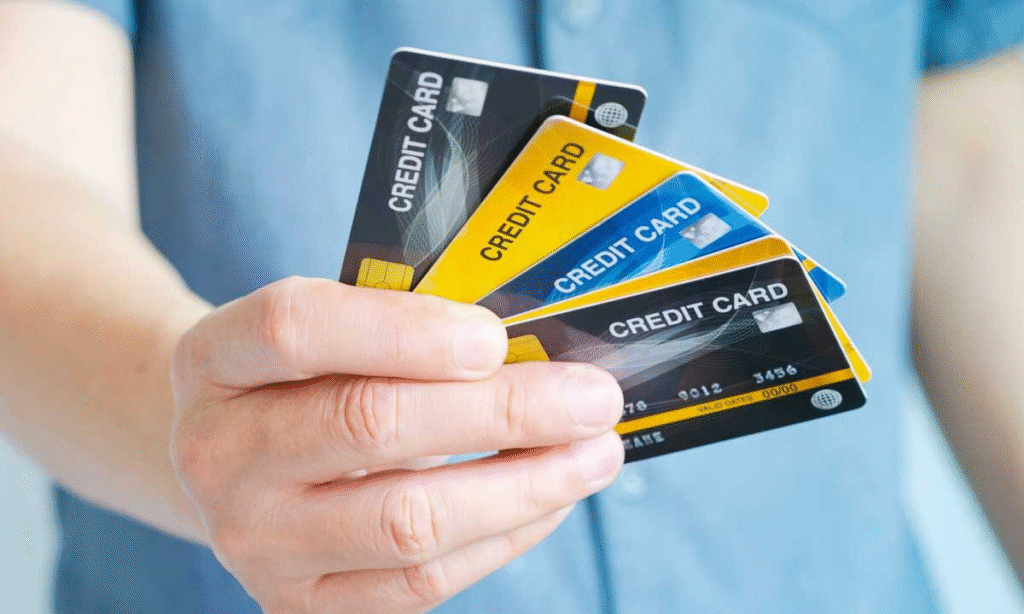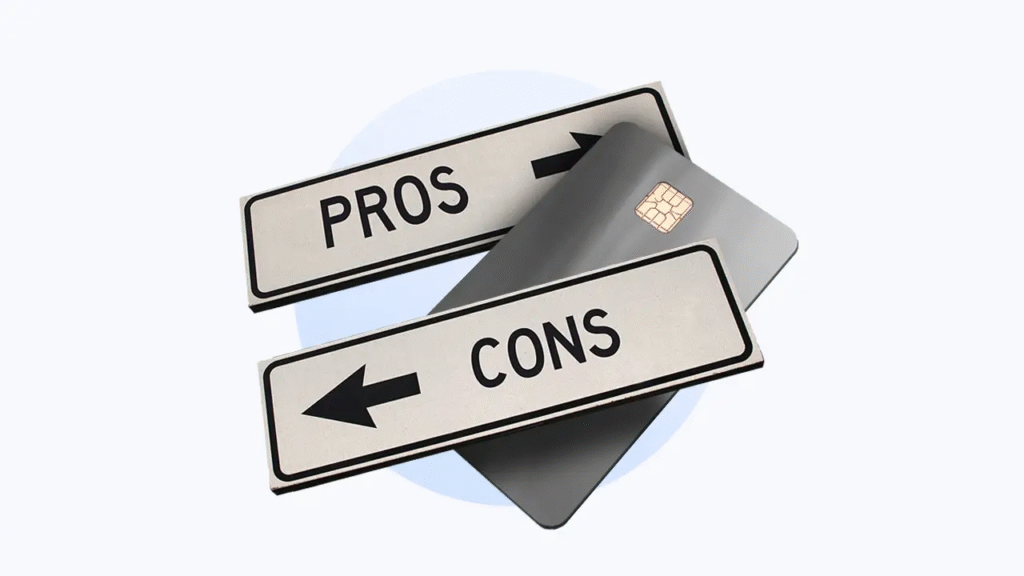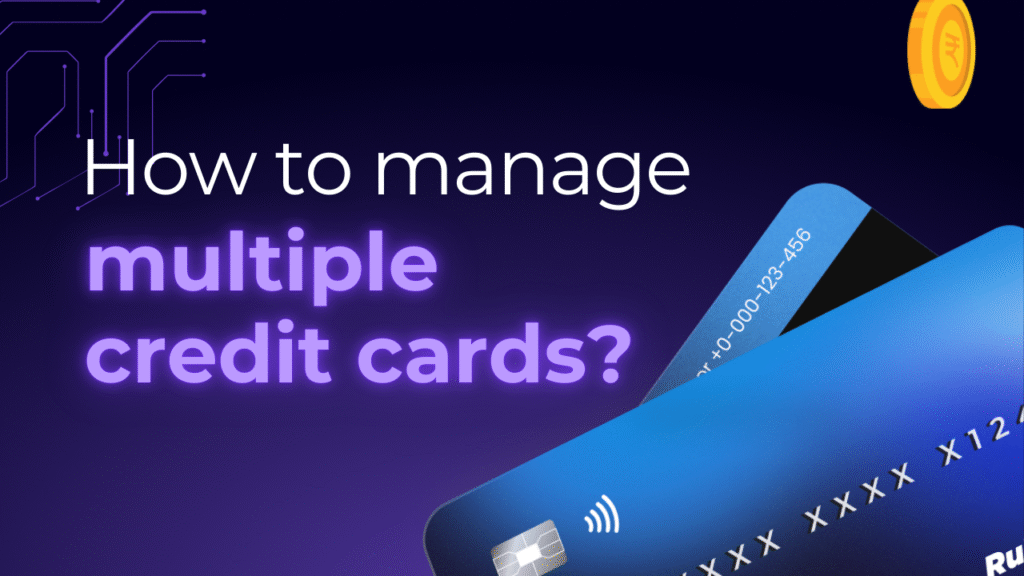
How Many Credit Cards Should I Have
In 2025, credit cards have become more than just a payment method—they’re tools for building credit, earning rewards, managing monthly expenses, and accessing emergency funds. But one question still puzzles many consumers: “How many credit cards should I have?”
The answer is not one-size-fits-all. Some financial experts suggest one or two is enough for most people, while others manage five or more cards responsibly. So, how do you decide what’s right for you?
In this guide, we’ll explore:
- The advantages and disadvantages of having multiple credit cards
- How your credit score is affected by the number of cards you own
- Signs you may have too few—or too many
- A framework to decide how many credit cards you should personally carry
Chapter 1: The Role of Credit Cards in Personal Finance
Before figuring out the ideal number, let’s understand why credit cards are such powerful financial tools when used responsibly.
1.1 What Is a Credit Card?
A credit card is a line of revolving credit provided by a bank or lender. You use the card to make purchases and repay the balance either in full or over time—with interest if unpaid in full.
There are three main types:
- Cash back cards
- Travel rewards cards
- Secured cards (for those building or rebuilding credit)
1.2 Benefits of Using Credit Cards
- Credit score building through on-time payments
- Purchase protection & fraud protection
- Rewards and perks: miles, points, cash back
- Emergency access to credit
- Expense tracking & budgeting tools
These perks, especially rewards and credit-building, are what drive people to get more than one card.
Chapter 2: How Credit Cards Affect Your Credit Score
Your credit score determines your loan approvals, interest rates, rental approvals, and even job opportunities in some industries.
2.1 How Credit Cards Influence Credit Score Factors
Credit cards impact nearly all components of your FICO® score:
| Credit Factor | Impact | Role of Multiple Cards |
|---|---|---|
| Payment history (35%) | High | Must pay all on time |
| Credit utilization (30%) | High | More cards = lower usage per card |
| Length of credit history (15%) | Medium | Oldest card’s age helps |
| New credit (10%) | Low | Too many applications = score dip |
| Credit mix (10%) | Low | Cards + loans = higher mix |
Example:
You have one card with a $5,000 limit and you spend $2,000/month → 40% utilization
You open a second card with a $5,000 limit, now total limit = $10,000 → 20% utilization
That’s healthier for your score.
2.2 Multiple Cards Can Help—Or Hurt
If you manage payments well, multiple cards improve your score. But if you:
- Miss payments
- Open too many in a short time
- Can’t track balances
You could hurt your score and risk debt.
Chapter 3: The Pros of Having Multiple Credit Cards
Let’s look at the strategic benefits of having more than one card:
✅ 3.1 Lower Credit Utilization Ratio
As shown earlier, spreading your spending across cards keeps your utilization below the recommended 30% threshold—a key factor for FICO.
✅ 3.2 Maximize Rewards & Cash Back
Different cards offer rewards in different categories:
- Groceries: 6% on Amex Blue Cash Preferred
- Dining: 3% on Capital One Savor
- Travel: 3x points on Chase Sapphire Preferred
- Gas: 5% rotating with Discover It or Chase Freedom
Using the right card for the right purchase can earn you hundreds in rewards per year.
✅ 3.3 Backup Credit Access
If a card is compromised or maxed out, others can be used for emergencies. It’s also helpful while traveling.
✅ 3.4 Better Credit Score (When Managed Right)
Multiple cards mean:
- Higher total credit limit
- Longer credit history (keep oldest cards open)
- Better mix of credit
✅ 3.5 Specialized Benefits
Some cards offer:
- Free airport lounge access
- Cell phone insurance
- Extended warranties
- Rental car coverage
Chapter 4: The Cons of Having Too Many Credit Cards

While multiple cards can be strategic, too many can backfire.
❌ 4.1 Temptation to Overspend
More credit = more temptation. If you’re not disciplined, spending can spiral and debt grows.
❌ 4.2 Difficult to Track Payments
Managing 4–6 cards means 4–6 due dates. Miss one, and your credit takes a hit.
❌ 4.3 Annual Fees Can Add Up
Premium cards can charge $95–$695+ per year. If you don’t use the benefits, the cost outweighs rewards.
❌ 4.4 Hard Credit Inquiries Lower Score Temporarily
Each new card application triggers a hard inquiry, which can lower your score by a few points.
Chapter 5: So, How Many Credit Cards Is Ideal?
Let’s get to the main question.
✅ Average American Holds 3–5 Credit Cards
According to Experian’s 2024 Credit Review:
- The average American has 4 credit cards
- Consumers with higher credit scores tend to have more cards, not fewer
✅ Recommended Ranges:
| Credit Score Goal | Ideal Number of Cards |
|---|---|
| Building credit | 1–2 cards |
| Maintaining excellent credit | 3–5 cards |
| Maximizing rewards | 4–7 cards |
| Rebuilding credit | 1 secured card (to start) |
Chapter 6: When You Should Consider Adding a New Card
You might consider a new card if:
- You want a card with rewards in a specific category (e.g. travel, groceries)
- Your current card has a low limit and you want to improve utilization
- You want to diversify issuers (Chase, Amex, Capital One, etc.)
- Your income and credit score have improved
Chapter 7: Signs You Have Too Many Credit Cards
Ask yourself:
- Are you forgetting payment due dates?
- Are you only making minimum payments?
- Are annual fees stacking up?
- Do you carry balances with interest?
- Do you feel anxious managing them all?
If yes to most, it may be time to:
- Close underused cards (only if they’re not your oldest)
- Consolidate balances
- Pause new applications
Chapter 8: Tips to Manage Multiple Credit Cards Wisely
✅ Use These Best Practices:
- Set up autopay for at least minimum payments
- Label cards based on purpose (e.g. “Groceries,” “Gas,” “Travel”)
- Track rewards and statement closing dates
- Review statements monthly for errors or fraud
- Keep oldest cards open to preserve length of credit history
- Use a budgeting app like Mint, YNAB, or Monarch to monitor spending
Chapter 9: FAQs About Multiple Credit Cards

1. Will having multiple credit cards hurt my score?
Not necessarily. If you manage them responsibly, it could help your score by reducing utilization and improving your credit mix.
2. Should I close a credit card I no longer use?
Only if it:
- Has a high annual fee, and
- Isn’t your oldest account
Closing older cards can reduce your credit history length.
3. Can I have two cards from the same issuer?
Yes! Many people carry multiple cards from issuers like Chase, American Express, or Citi to access different perks and bonus categories.
Conclusion: What’s Right for You?
So, how many credit cards should you have?
There’s no universal number—but here’s a final framework:
- If you’re new to credit, start with one or two cards.
- If you’re focused on rewards and optimization, aim for 3–5 cards.
- If you struggle to manage payments, stick to one until you’re confident.
- Always prioritize on-time payments and keeping your balances low.
Remember: credit cards are powerful tools—not extra income. Used wisely, they can elevate your financial health and unlock meaningful rewards.
🔑 Key Takeaways
- Multiple credit cards can improve your credit score by lowering your utilization ratio.
- Most financially responsible Americans manage 3–5 credit cards.
- Only take on as many cards as you can track, manage, and pay off monthly.
- The ideal number depends on your lifestyle, discipline, and financial goals.
Let’s dive in.




